#Roman Amphitheater Amman
Text
Roman Theater, Souks, Eid al-Fitr Amman Jordan

View On WordPress
#Amman Citadel#Amman Farmers Market#Bedouin Craftsman#Bedouin Tents#Egyptian Pharaoh Cleopatra VII of the Ptolemaic Dynasty#Eid al-Fitr Festival of Breaking the Fast#I&039;tikaf#Jabal Al-Jofah#Jordan Folklore Museum#Jordanian Museum of Popular Traditions#Nour al Barakah#Philadelphia Capital of the Roman Empire#Ptolemy Philadelphus#Ramadan#Roman Amphitheater Amman#Roman Emperor Antoninus Pius#Roman Triumvir Mark Antony#Souk el-Khodra#Souk el-Sagha#Souk Jara#Souk Mango
0 notes
Photo

Main activity venues on Jordan’s Royal Wedding day
The Ministry of Culture announced a program of events and activities, which will be held Thursday (June 1), in celebration of the Royal Wedding of His Royal Highness Crown Prince Al-Hussein bin Abdullah II and Miss Rajwa Khaled Al-Saif.
The events, which will begin at 5 pm, will be held across the Kingdom and include live broadcasting of the Royal Wedding, in addition to a variety of activities for children such as face painting, giveaways and music.
Events will also feature folklore shows, patriotic music, live musical performances and fireworks.
The locations are:
Amman
Roman Amphitheater
AlJubaiha Park
King Abdullah II Park - Muqabalain
Zarqa
Prince Mohammad Youth City
Balqa
Balqa University
Madaba
Emad Zanki Sports Club
Mafraq
Prince Ali Bin Alhussein Sports Complex
Jerash
Southern Theater
Ajloun
Alhussein Youth Camp
Irbid
Alhassan Youth City
Karak
Prince Faisal Bin Alhussein Complex
Tafilah
Tafilah Sports Club
Ma’an
Princess Haya Bint Alhussein Complex
Aqaba
Great Arab Revolt Plaza
8 notes
·
View notes
Text
Amman Hotel | hotel-philosophy.com

Discover the Essence of Luxury at Hotel Philosophy, Amman
Nestled in the vibrant heart of Amman, Hotel Philosophy offers a unique blend of modern luxury and cultural heritage, making it the premier choice for travelers seeking a boutique hotel experience in Amman, Jordan. Situated at Building 48, Yazeed bin Abi Sufian Street, this renovated 1930s building combines historical elegance with contemporary style. Learn more about our exclusive offerings by visiting our website at www.hotel-philosophy.com.
Experience Modern Comforts in a Historic Setting
At Hotel Philosophy, guests are treated to a state-of-the-art experience in the center of Amman. Our hotel is just steps away from iconic landmarks such as the Amman Citadel and the Roman Amphitheater, providing not only comfort but also a deep dive into the rich history of the region. Whether you’re exploring the old town’s charm or enjoying the view from our rooms, every detail at Hotel Philosophy ensures a memorable stay. Check out our luxurious accommodations on www.hotel-philosophy.com.
Indulge in Culinary Excellence
Dining at Hotel Philosophy is nothing short of spectacular, with our on-site restaurant setting the standard for fine dining in downtown Amman. From international cuisine to local signature dishes, our chefs are dedicated to providing a vibrant dining atmosphere that can only be found in the heart of Amman. For an unforgettable dining experience, reserve a table through our website at www.hotel-philosophy.com.
Unwind in Style
After a day of exploring Amman, relax in our bespoke bar and lounge areas, where the cocktails are as innovative as the ambiance is enchanting. Offering stunning city views, our rooftop dining area is a perfect spot to unwind. The combination of exquisite drinks, breathtaking views, and an inviting atmosphere makes Hotel Philosophy the ultimate destination for relaxation and leisure. Discover more about our unique bar offerings at www.hotel-philosophy.com.
Convenience Meets Luxury
Hotel Philosophy doesn’t just offer luxury accommodations and fine dining; our full range of services includes concierge assistance, valet parking, and complimentary Wi-Fi, ensuring that every aspect of your stay is seamless and enjoyable. Located within walking distance of Rainbow Street’s bustling cultural scene, our hotel is ideally placed to provide guests with an authentic and immersive Amman experience. Plan your stay by visiting www.hotel-philosophy.com.
Book Your Stay at Hotel Philosophy
For those seeking a boutique hotel that encapsulates the best of modern luxury and cultural richness in Amman, look no further than Hotel Philosophy. Whether it's the architectural charm, the top-notch amenities, or the proximity to Amman’s famous historical sites, our hotel offers an unmatched experience. Start planning your journey to Amman by booking directly at www.hotel-philosophy.com.
Join us at Hotel Philosophy for an exceptional travel experience where every moment reflects our commitment to excellence and guest satisfaction.
0 notes
Text
Top Attractions for Travelers Visiting Jordan

Jordan is a land sacred to many faiths. Located east of Jerusalem, it provides religiously significant places for Christians, Muslims, and Jews. According to the Bible, Moses glimpsed the Promised Land from one of Jordan's mountains before his death. Today, pilgrims visit this same peak to honor Moses and follow in his footsteps.
Amman, Jordan's vibrant capital, showcases a fusion of antiquity and modernity. The cityscape features striking skyscrapers that contrast beautifully with traditional gold-domed mosques. Must-see attractions include the massive Roman amphitheater where grand events were once held, surviving pillars from the Temple of Hercules, and ruins from the 4th century Umayyad palace. Venturing to the so-called Rainbow Street in downtown Amman immerses visitors in the bustling cafes, restaurants, and vibrant nightlife.
Over an hour from Amman lies Jerash, home to some of the most impressive Roman ruins in the Eastern world. Once called Gerasa, this city features paved roads and treasures such as the decorative columns of the Roman Forum and Temple of Zeus, best viewed from the summit. Ongoing excavations have uncovered much of this white-stone city, giving a rare glimpse into the Roman times. Other sites include the Grand Hadrian's Arch entranceway, the Hippodrome arena for chariot races, and the Jerash Museum.
The ancient city of Petra, once the capital of the Nabataean Kingdom over 2,000 years ago, is Jordan's top attraction. Also called the Red City due to its sandstone surroundings, Petra earned UNESCO World Heritage Site status for its immense historical and archaeological value. This entire city was carved out of rose-colored cliffs, revealing stunning architecture.
Visitors pass through a narrow kilometer-long gorge with towering rust-colored walls called the Siq, which leads to the iconic treasure-inspired facade of ad-Deir, also known as The Monastery. Beyond The Monastery lies a sprawling expanse of temples, tombs, theaters, and other structures sculpted from rose-red rock.
In southern Jordan, Wadi Rum is a stunning desert valley that captivates visitors with its vast sandstone and granite cliffs, striking landscapes, and towering rock formations spanning the horizon. This unique setting offers adventurous travelers and hikers one of the top rock-climbing spots in the region. Visitors can also explore the desert expanse on camelback tours and sleep under the starry skies while camping overnight. A full day spent amidst the scenery lets guests witness the changing hues of the rust-toned rocks as the sun travels across the sky.
Nestled high in northern Jordan's hills overlooking the Sea of Galilee is the lush town of Umm Qais, also called Gadara. Its green landscape stands distinct from the surrounding desert environs. Within it lies well-preserved ruins spanning many eras, including Roman-era streets and two impressive theaters.
The town's main attractions are the hilltop vistas showcasing sweeping views of the Jordan Valley, Galilee Lake, Syria, and Israel. Biblically, Umm Qais is known as the location where Jesus once cast out demons from two men into a herd of pigs, as recounted in the passage of the "Miracle of the Gadarene Swine."
No trip to Jordan is complete without visiting the Dead Sea. As the lowest point on land globally, over 1200 feet below sea level, this geographical marvel derives its name from the lack of marine life. Its high-saline waters permit bathing visitors to float effortlessly while enjoying the scenery. Visitors can also indulge in rejuvenating experiences such as soaking in mineral-dense waters or applying its therapeutic mud, renowned for detoxifying and exfoliating properties. Leisurely boat rides across the sea's calming surface while absorbing expansive views offer visitors an even more indulgent encounter.
1 note
·
View note
Text
EGYPT AND JORDAN HONEYMOON TRAVEL PACKAGE
EGYPT AND JORDAN HONEYMOON TRAVEL PACKAGE
Spend your HONEYMOON with amazing EGYPT AND JORDAN HONEYMOON TRAVEL PACKAGE, Enjoy a memorable Honeymoon Packages, Try unforgettable adventure this year with our Honeymoon Package in Egypt, visiting the most famous landmarks of Jordan like city of Petra, carved into the stone of the Jordan desert, the treasury, the siq, the Roman Jerash, Float in the Dead Sea salty water, Mount Nebo the place where Prophet Moses gazed at the promised land, Madaba and more
Spend your Holiday with amazing Honeymoon in Amman, Enjoy a memorable Honeymoon in Amman, Try unforgettable adventure this year with our Honeymoon in Jordan, visiting the most famous landmarks of Jordan like city of Petra, carved into the stone of the Jordan desert, the treasury, the siq, the Roman Jerash, Float in the Dead Sea salty water, Mount Nebo the place where Prophet Moses gazed at the promised land, Madaba and more
Overview
Enjoy your honeymoon holiday in Egypt and Jordan
Itinerary
Egypt and Jordan Honeymoon Travel
Day 1 Arrival Amman Jordan
upon your arrival to Amman airport, meet our tour rep, transfer to your hotel in Amman, free day for leisure,
Overnight in Amman hotel
Day 2 Amman day tour
Breakfast, then tour to visit Amman sightseeing, tour to the fortress of Jebel El Qalaa, then the famous Amphitheater of Amman, then tour to the Archaeological museum, then mosque king Abdullah I , then Ummayyad palace, return to hotel
Overnight in Amman
Day 3 Petra Jordan Tour - Egypt
Breakfast , then meet our tour guide, transfer to Petra, lunch meal, then transfer to Aqaba port and cross Aqaba gulf by the ferry boat, arrival to the Egyptian side, transfer to your hotel in Sharm ( or Taba as your choice )
Overnight in Sharm
Day 4 Sharm Egypt free day
Free day for leisure in your hotel in Sharm
Overnight in Sharm
Day 5 Sharm Egypt, Boat trip
Enjoy day trip to Ras Mohammed, including lunch, soft drinks and snorkling struments, transfer to hotel
Overnight in Sharm
Day 6 Sahrm Egypt Mount Moses
Enjoy free day in Sharm, then at sunset transfer to Moses mount to climb moses mount, overnight on the top of the mountain,
after sun rise go down to Saint Catherine monastery to visit it ( note is closed in the holy days so may be we can change the day tour not to be the 6th day in case if day 7 is Sunday or Friday or Holy days
Overnight on Moses mount
Day 7 Saint Catherine tour
upon arrival to the feet of Moses mount , you will find the famous Sain Catherine monastery, visit the old monastery, then drive to Dahab where you will enjoy lunch meal, transfer to Sharm
Overnight in Sharm
Day 8 Final departure
After breakfast, check out, transfer to Sharm airport, final departure
In case you want to add more days or less days or other destinations in Egypt or Jordan such as Dead Sea, Madaba Cairo , Luxor or add day tours to Jerusalem Just email us and tell us about any thing you want to change or add in your honeymoon tours in Egypt and Jordan
Included
Egypt and Jordan Honeymoon Travel Include
- Pick up and drop off service at all Egypt and Jordan airports and hotels
- All the tours transfers by modern A/C vans or buses
- Tour guide speaking English language during all the tours in Egypt and Jordan
as per itinerary
- Acomodation in 4 or 3 stars hotel at Amman ( as your choice ) 2 night Half board
- Acomodation 6 nights in Sharm in 4 or 5 hotel as your choice ( H.B OR ALL INCLUSIVE )
- A ll the tours as our itinerary including transfers, tickets and English speaking guide
- Ferry boat from Jordan to Egypt
Excluded
Egypt and Jordan Honeymoon Travel excludes:
- International flights
- Optional tours
- Anything not mentioned as personal expenses, or not
mentioned meals
- Tipping kitty
Notes
Children policy: 6 - 11.99 pay 50% of the price
0 - 05.99 is 100 % Free of Charge
What to carry with you?
Passport valid for More than 6 months
Cotton or linen clothes in summer and Warm clothes in winter
Hat, Sunblock, Sunglasses
Comfortable shoes
Camera / Video Camera Mobile phone is better if you have what sup application to be easier to contact you
Note: There will be extra during the peak periods (New Year, Easter & Christmas)
For more info
· Website
· https://www.worldtouradvice.com/
· Mobile and what’s App:
· 002 01090023837
0 notes
Text
Amman: Culture, Gastronomy, Adventure

Welcome to Amman, the vibrant capital city of Jordan, a magnet for the adventurous souls and wanderlust seekers. With a rich tapestry of history, a diverse culinary scene, and numerous activities, this city promises an unforgettable experience. Let's delve into the heart of Amman and uncover the gems that this enchanting city has to offer.
Culture: Unveiling the Past
Amman boasts a captivating blend of ancient ruins and modern architecture, showcasing the city's rich cultural heritage. To truly immerse yourself in Amman's historical tapestry, a visit to the Citadel is a must. This ancient citadel, perched atop Jebel al-Qala'a, offers panoramic views of the city and houses remnants from various civilizations, including the Roman, Byzantine, and Umayyad periods.
The Roman Theater, a true architectural marvel, cannot be missed. Be it a performance you catch or just a moment you take to sit and soak in the grandeur, this ancient amphitheater is a testament to the city's Roman influences and the enduring love of the arts.
Gastronomy: A Culinary Wonderland
Prepare your taste buds for a culinary adventure like no other. Amman's vibrant food scene is a delightful fusion of traditional Jordanian flavors and international influences. Start your day with a hearty Jordanian breakfast at Hashem, a legendary spot known for its mouthwatering falafel, hummus, and freshly baked bread.
Activity: Unleash Your Adventurous Spirit
Amman offers a plethora of activities to satisfy the adventure enthusiasts. Embark on a journey to explore the desert wonders of Wadi Rum, a UNESCO World Heritage site known for its magnificent rock formations, ancient rock art, and adventurous jeep and camel safaris. The awe-inspiring landscapes will transport you to another world.
Transportation and Tips: Navigating Amman
Getting to Amman is relatively easy, with Queen Alia International Airport serving as a major hub. Upon arrival, taxi services are readily available, and many hotels offer shuttle services. Alternatively, public transportation in Amman consists of buses, taxis, and ride-hailing services like Uber and Careem.
Nightlife: Dancing Under the Moonlight
When the sun sets, Amman comes alive with a vibrant nightlife scene. With a variety of bars and clubs, the trendy district of Abdoun has something for everyone, be it live music, DJ sets, or a laid-back atmosphere.
Shopping: A Shopper's Paradise
Amman is a haven for shopaholics, offering a mix of traditional markets and modern shopping malls. Explore the chaotic yet charming streets of downtown Amman, where you'll find the bustling souks of Al-Husseini Mosque and Rainbow Street. Immerse yourself in the sights, sounds, and scents of the local markets as you haggle for unique souvenirs, spices, and handicrafts.
Money Matters: Currency and Etiquette
The currency of Jordan is the Jordanian Dinar (JOD). It is advisable to carry local currency for smaller establishments and local markets. Credit cards are widely accepted in most places, but it's always good to have some cash on hand.
As you explore this culturally-rich city, please remember to respect local customs and traditions. Dress modestly, especially when visiting religious sites, and be mindful of local etiquette.
Amman is a city that captivates the senses and leaves an indelible mark on every traveler's heart. Whether you find yourself wandering through ancient ruins, indulging in delectable cuisine, or embarking on exciting adventures, Amman will ignite your spirit of exploration. Uncover the secrets of Amman and let this enchanting destination become a cherished chapter of your travel adventures.
Read the full article
1 note
·
View note
Text
The Best Places to Visit in Jordan: A Journey of Timeless Beauty
Introduction:
Jordan, a captivating country in the heart of the Middle East, is a treasure trove of historical sites, natural wonders, and warm hospitality. Steeped in rich culture and boasting breathtaking landscapes, Jordan is a must-visit destination for travelers seeking an extraordinary experience. In this blog post, we will explore the best places to visit in Jordan , from the iconic ancient city of Petra to the stunning desert landscapes of Wadi Rum. Get ready to embark on a journey of timeless beauty!
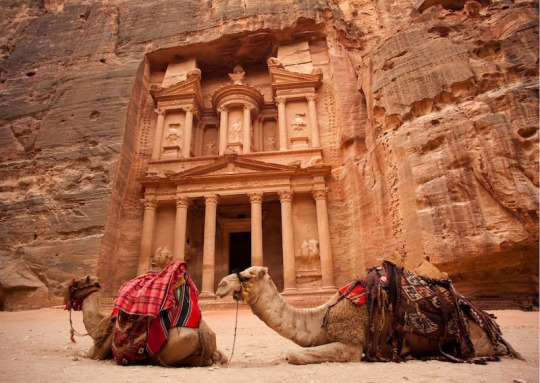
Petra: The Rose City:
No visit to Jordan is complete without exploring the mesmerizing city of Petra. Carved into the rose-colored sandstone cliffs, this UNESCO World Heritage site is an architectural masterpiece and one of the New Seven Wonders of the World. Begin your adventure by walking through the narrow Siq, a dramatic canyon that leads to the Treasury, Petra's most famous monument. As you wander through this ancient city, discover intricately carved tombs, temples, and a Roman theater, all testaments to the once-flourishing Nabatean civilization.
Wadi Rum: The Martian Landscape:
Prepare to be transported to another world as you venture into the otherworldly landscapes of Wadi Rum. This vast desert, with its towering sandstone mountains and rust-colored dunes, has served as a backdrop for numerous movies. Explore the rugged terrain on a thrilling 4x4 tour or embark on a camel trek to witness the magical sunset over the horizon. For an unforgettable experience, spend a night under the starry desert sky at a Bedouin camp and immerse yourself in the traditional Bedouin culture.
Dead Sea: The Lowest Point on Earth:
A visit to the Dead Sea is a unique and rejuvenating experience. Known for its high salt content, this remarkable body of water allows you to effortlessly float on its surface, providing a therapeutic and relaxing sensation. Smother yourself in the mineral-rich mud found along the shores, renowned for its healing properties. Besides indulging in the sea's extraordinary benefits, the surrounding area offers luxury resorts, spa facilities, and panoramic views of the beautiful Jordanian landscape.
Amman: The Vibrant Capital:
Amman, the capital city of Jordan, seamlessly blends ancient traditions with modern flair. Explore the bustling downtown area, where you can wander through traditional markets, known as souks, and savor delicious local cuisine. Don't miss the opportunity to visit the Roman Theater, a remarkably preserved amphitheater that dates back to the 2nd century. For a panoramic view of the city, head to the Citadel, home to ancient ruins, including the Temple of Hercules.
Jerash: The Pompeii of the East:
Step back in time and discover the ancient Roman city of Jerash, often referred to as the Pompeii of the East. Wander through its well-preserved ruins, which include an oval-shaped forum, grand temples, and an impressive amphitheater. Jerash's colonnaded streets and ancient arches provide a fascinating insight into the region's Roman past. To enhance your experience, plan your visit during the annual Jerash Festival, where you can witness lively performances of traditional music, dance, and theater.
Conclusion:
Jordan's remarkable beauty and rich history make it a truly unforgettable destination. From the awe-inspiring rock-cut architecture of Petra to the dramatic desert landscapes of Wadi Rum, Jordan offers a diverse range of experiences for every traveler. Immerse yourself in the country's captivating culture, explore ancient ruins, float in the buoyant waters of the Dead Sea, and indulge in delicious cuisine. A journey through Jordan is an adventure that will leave you with memories to treasure for a lifetime.
0 notes
Text
Top 5 historical places to visit in Jordan in 2023
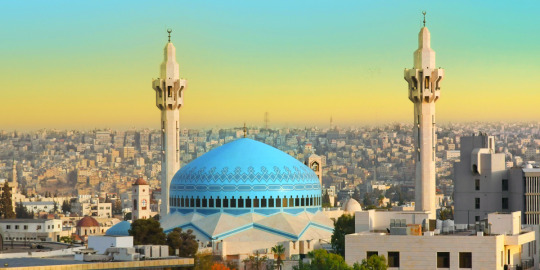
Jordan is a country rich in history and culture, with ancient sites that date back thousands of years. It's no wonder that it is a popular tourist attraction among tourists looking to explore the wonders of the Middle East. If you're planning a trip to Jordan in 2023, you won't want to miss out on these top 5 historical places to visit.
First up is Petra, also known as the Rose City. This ancient city is one of the most famous historical sites in Jordan, and for good reason. It boasts impressive architecture dating back to the 4th century BC, and its iconic Treasury building is instantly recognizable. Visitors can explore the city's remarkable buildings, including the Monastery and the Royal Tombs, as well as take in the stunning natural beauty of the surrounding landscape.
To get to Petra, you'll need to make your way to the town of Wadi Musa, which serves as the gateway to the city. Once you arrive, you'll need to purchase a ticket to enter the site. The ticket includes access to all of the main attractions in Petra, including the Treasury, the Monastery, and the Royal Tombs.
If you're looking to learn more about the history of Petra, you can hire a local guide to take you on a tour of the site. Guides are available for hire at the entrance to Petra, and they can provide you with fascinating insights into the city's history and architecture.
Another tourist destination in Jordan is Jerash, located just 50 km north of Amman. This ancient Roman city is one of the best-preserved in the world, and it offers visitors a fascinating glimpse into life in the Roman Empire. The city was founded in the 4th century BC, but it reached its peak during the 2nd and 3rd centuries AD, when it boasted a population of over 20,000 people.
Visitors to Jerash can explore the ancient streets, temples, and amphitheaters of the city, which have been remarkably well-preserved over the centuries. Some of the highlights of the site include the Temple of Artemis, the South Theater, and the Nymphaeum.
Like Petra, Jerash offers visitors the opportunity to hire a local guide to take them on a tour of their respective tourist destinations. Guides can provide you with in-depth information about the history and culture of the city, as well as answer any questions you may have.
Moving on, we come to Madaba, a small city located just 30 km south of Amman. Madaba is known for its impressive collection of Byzantine mosaics, which are among the finest in the world. The most famous of these mosaics is the Madaba Map, which is the oldest surviving map of the Holy Land and depicts Jerusalem and other biblical sites in great detail.
Visitors to Madaba can explore the city's many churches and museums, which are home to some of the most impressive mosaics in the country. One of the highlights of the city is the Church of St. George, which is home to the Madaba Map.
In addition to its rich history, Madaba is also known for its lively markets and delicious cuisine. Be sure to sample some of the local dishes, such as mansaf, a traditional Jordanian dish made with lamb and yogurt sauce.
Last but not the least, we come to Wadi Rum, a vast desert valley located in southern Jordan. This natural wonder offers visitors the opportunity to explore stunning landscapes and historical sites, and it's a must-visit destination for anyone interested in the great outdoors.
In conclusion, Jordan is a country steeped in history and culture, with an abundance of ancient sites that offer a fascinating glimpse into the past. Whether you're interested in exploring the remarkable architecture of Petra, the well-preserved ruins of Jerash, the stunning Byzantine mosaics of Madaba, or the natural beauty of Wadi Rum, Jordan has something to offer everyone. A trip to Jordan in 2023 is sure to be an unforgettable experience, full of adventure, history, and culture. So pack your bags and get ready to explore this amazing country!
To find out more about Nigerian places and cities, contact Vd Holiday Nigeria
0 notes
Photo

Roman amphitheater - Amman, Jordan
1 note
·
View note
Photo



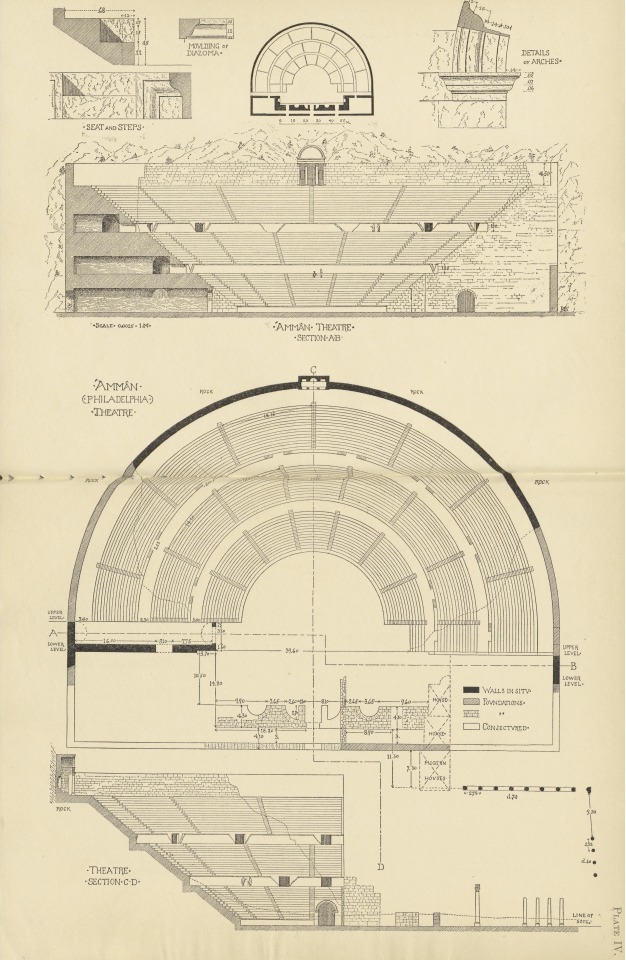





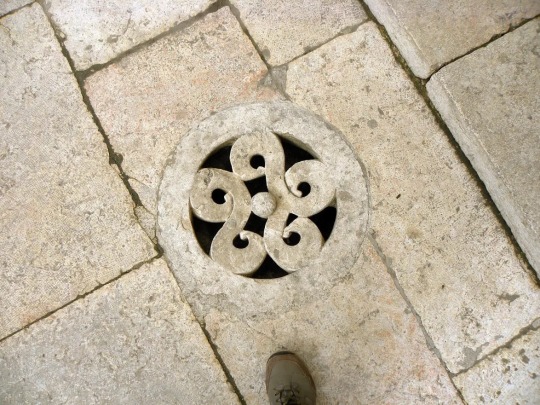

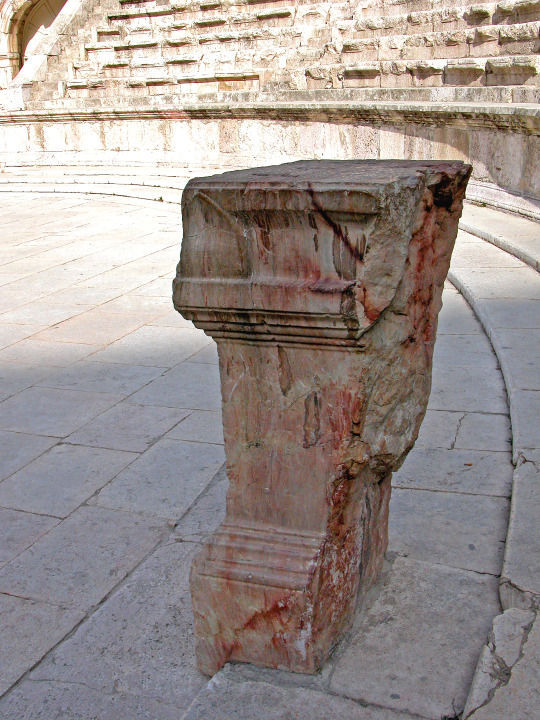
Great Theatre of Philadelphia (Theater of Amman)
Philadelphia (Amman), Jordan
2nd Century CE
6,000 seat
The Roman Amphitheater is located in the eastern part of the Jordanian capital, Amman. A Greek inscription on one of the pillars indicates that this amphitheater was built in honour of Emperor Antonius Pius (138–161 CE).
The large and steeply raked structure could seat about 6,000 people: built into the hillside, it was oriented north to keep the sun off the spectators.
It was divided into three horizontal sections (diazomata). Side entrances (paradoi) existed at ground level, one leading to the orchestra and the other to the stage.
The highest section of seats in a theatre offers excellent sightlines, while the actors can be clearly heard, owing to the steepness of the cavea.
Sources and more text below.
“The great theatre of Philadelphia is situated near the eastern extremity of the town, on the south side of the stream (see map), at a point where the mountain¬ side, a steep wall of rock that rises from the river throughout the greater part of the length of the town, stands back from the bank of the stream, leaving a level terrace, partly artificial and partly natural, upon which a number of ancient buildings stood. The cavea of the theatre, which consists of three horizontal divisions of seats, was almost completely excavated in the rock of the hill-side, though it was found necessary to build up the higher parts of both ends of the semicircle. None of the seats was cut in the natural rock, but all were made of a slightly different quality of limestone, quarried, no doubt, in the immediate vicinity. The artificial portions of the cavea were erected upon masses of masonry penetrated with tunnel vaults that followed the curve of the cavea to about a third of its perimeter on either side. The semicircle of the cavea was produced in straight lines about four meters on either hand, and this part, being entirely artificial, was built upon three stories of superposed tunnel vaults separated by great masses of solid masonry. The lowest of these vaults, on either side, served as an exit, a. sort of covered parados, under the end seats. The scaena with all the stage buildings has been entirely destroyed, leaving only remains of its foundations. The auditorium (Ill. 31) is exceptionally well preserved so that even the casual visitor will observe that the cavea had three horizontal divisions of seats, with an upper and a lower praecinctio, besides an outer horizontal passage above the uppermost tiers of seats. The seats in the middle sections are preserved, from the orchestra to the uppermost passage, though those of the lowest division are almost completely buried in soil that has washed down from above. A more minute examination reveals, as the plan (Pl. IV) shows, that the lower and middle sections comprised each sixteen tiers of seats, divided by six scalaria into seven cunei, with scalae at the ends of the outer cunei. The uppermost division of seats is composed of eight cunei, and the scalae in this division were midway between the ends of the scalae of the lower divi- sions. The number of tiers of seats in the lowest division is assumed to be equal to that in the middle division from the oldest descriptions on the one hand, and from the measurements on the other. The orchestra and the lowest tiers of seats are completely buried, as is shown by the dotted line in section C. D. of Plate IV ·, but the level of the orchestra may be determined from the level of the passages within the arches that open upon the orchestra on either side. The semicircular barrier about the orchestra is not likely to have been over 1.50 m. high, and a height of 1.30 m. would allow for just sixteen tiers. The middle division preserves almost all of its tiers of seats intact, on the west side (Ill. 32) as far as the scalae on the diameter of the semicircle, and on the east side (Ill. 33) to within two or three meters of that line, as is shown by dotted lines on the plan and in Pl. IV, section C.D. The topmost division preserves five cunei intact, the cuneus on the west end, and the corresponding cuneus on the opposite side, with half of the cuneus adjoining it, having fallen in ruins (Ill. 32 and 33). These portions being built upon artificial substructures were naturally among the first to fall. The middle horizontal division of seats was reached from the lower praecinctio by double flights of steps in the middle of the terminal cunei. The uppermost division was reached from the upper praecinctio by similar flights in the middle of each of the uppermost cunei, at the ends of the lower scalae (Plan, Pl. IV). The upper and the lower praecinctio are each 2.30 m. wide; their walls are 1.80 cm. high; the passage at the top of the cavea is 3.40 m. wide, and probably had a colonnade corresponding to its outer wall which is 4.50 m. high. In the middle of this outer wall is an exedra which will be discussed later. Immediately within the wall of the lower praecinctio, at both ends, is a vaulted passage with two openings upon the praecinctio. From the present condition of the passages it is not possible to determine how far the vaults were carried; but, judging from the slope of the hill at this point, I do not believe that they were carried far beyond the second opening to the praecinctio. (Section C. D.). The passages within the wall of the upper praecinctio were carried well around the curve to points shown in the plan by dotted lines drawn across the uppermost division of seats. It had three openings to the praecinctio, on either side of the cavea. (Section C. D.). The openings between the vaulted passages and the praecinctiones were not arched, but were provided with long three-piece lintels or flat arches, that carried the seats above them. The steps which mounted to the upper divisions of seats were placed on either side of these openings, and within the circle of the lowest tier which was not a seat, properly speaking, but a narrow passage above the praecinctio. The arches that opened upon the orchestra sprang from moulded caps, and had moulded archivolts, as is shown in the detail drawings in Plate IV. The same plate shows also the details of the mouldings at the top of the walls of the praecinctiones, and the mouldings and other details of the seats and steps. The details of the exedra at the top of the cavea could not be accurately drawn, owing to the fact that the place has been converted into a modern dwelling. It appears to be well preserved. Two columns stand in the opening of the exedra, supporting an architrave and an arched pediment (Ill. 31). The spaces between the columns, and on either side of them, have been filled with walling pierced with a door and windows, and the pediment has two windows in it. The whole surface is covered with mud plaster, so that nothing but the chief dimensions of the exedra are obtainable. I was told that there were three niches within the exedra, and I have shown them in the plan and elevations as they were described to me. The extension of the cavea toward the north was, of course, entirely artificial. The lowest of its vaulted passages are preserved on both sides, with their ornamental arches which opened upon the orchestra. These arches are in line with the sixth tier, from the top, of the lowest division of seats. Above the arches were five tiers of seats. The outer ends of these passages were undoubtedly open, though they are closed now, so far as we may see in the accumulation of debris; for this reason I have shown walls in the plan closing the ends, but in section A B I have shown an arched opening at the left end. The remains of the next vaulted passage, i. e., that on the level of the first praecinctio, consist of a pavement and two side walls on the west side (Ill. 32), and a pavement on the side opposite (Ill. 33). Of the uppermost passage no remnant remains, but it unquestionably existed. In section CD of Plate IV, a cut through the three vaults is shown on the left, with the ends of the curved passages opening upon them; on the right is shown the plain outer wall that rose from the pavement of the parados to the top of the end of the cavea. It is impossible, in the present condition of the ruins, to find out definitely the width or disposition of the paradoi. Owing to the distance between the cavea and the foundations of the scaena, it seems certain that there were open spaces on either side between the ends of the cavea and the stage buildings. However, there seem to have been walls at the ends of the paradoi, as may be observed in Ill. 32, where an ancient wall, now employed as the east wall of a modern dwelling, is seen, abutting the end of the cavea at the level of the lower praecinctio. The lower part of this wall is deeply buried in debris, and it is impossible to say whether there was an opening in it on the orchestra level at the end of the parados. It may have been that the ends of the paradoi were closed, and that the paradoi were used exclusively by the chorus (see small restored plan above section A B); while the vaulted passages below the ends of the cavea were the means of entrance and exit for the audience. One would hardly detect the remains of stage buildings in the ruins of this theatre without searching for them. Some writers have even gone so far as to say that the theatre of Phila- delphia had no stage. The foundations of these buildings are indeed almost completely buried, only the upper surface of the stones can be seen in the general level of the soil, and this surface is worn smooth with constant passing. In the plan I have shown the foundations as they appear. To the left of the line which bisects the cavea are foundations which show a semicircle and a quadrant facing the cavea; the quadrant terminates in a short projecting wall: the rear part of these foundations is perfectly straight, and three meters from it are the foundations of a wall, 1.10 m. thick, composed entirely of headers. On the right of the line which bisects the cavea there are no traces of foundations now visible as far as a modern wall; this wall are foundations with a semicircle corresponding exactly to the other, and with a straight line behind it, a passage three meters wide, and an outer wall, 1.10 m. thick, which forms the boundary of a modern court-yard. Beyond the semicircle, i. e., toward the west, is an open space, and on the other side of this, more foundations, and other modern houses. These remains are scant enough, but they apparently give us a basis for the restoration of the scaena in the form of a solid wall 4.30 m. thick, with an opening in the middle flanked by half niches, with semicircular niches on either side beyond the half niches, and with a passage in the rear. We may perhaps carry the restoration a little further by recognising a side portal of the scaena in the break in the west side, though it does not appear to be matched on the opposite side. This, however, may be due to the condition of the ruin. The plan of the parascenia must remain a matter of conjecture until systematic excavations shall have been undertaken here. Eastward from the foundations of the scaena are heaps of rubbish, and westward are modern houses. I am of the opinion that two of the modern houses shown on the plan, and in Ill. 32, make use of the wall of the stage buildings, but the house- walls are so completely coated with mud plaster that it is quite impossible to ascertain whether they are ancient or not. The extreme north wall of the stage buildings appears, from the ruins, to have been prolonged to the outer ends of the cavea, as I have shown in the small tentative restoration. Outside of the rear wall of the stage buildings, and at a distance of about seven meters from it, there appears to have been a colonnade of Corinthian columns. Eight of these columns are still standing, with architraves above them, opposite the western end of the cavea. The row of columns extends a little beyond the line of the west side of the cavea to a double column, the stump of which protrudes from the soil. From this point a second colonnade was carried northward, not quite at right angles with the first colonnade. The second colonnade consists now of only four columns without capitals; it is of smaller scale than the other: the larger columns are .70 m. in diameter, and the intercolumniations are nearly 3 m.; while the smaller columns have a diameter of only .60 m., and inter- columniations of 2.32 m. The greater colonnade undoubtedly extended entirely across the width of the theatre, and the smaller one may have corresponded to a similar colonnade at the east end of the theatre, the three enclosing one end and two sides of a public square in front of the great theatre, flanked on the east by the odeum, and, possibly, on the west by some other building which has completely disappeared. M. de Laborde published a sketch1 of the theatre as it was in 1827, anti gives a short description of its ruins; Captain Conder gives an incomplete plan~ on a small scale, and describes the ruins at some length as he found them in 1881. Among the earlier illustrations of the theatre are those published by Merrill3, and Thomson 4 5 who visited "Amman between 1875 and 1880. A more recent photograph is that published by Professor Briinnow in his great work u on the Province of Arabia. “
(Text is told first hand by Howard Crosby Butler, who wrote the Syria series)
Sources: 1, 2 ,3
#art#Architecture#travel#history#roman#amman#Philadelphia#jordan#theater#theatre#middle east#roman art#roman architecture#roman theatre#Roman theater
712 notes
·
View notes
Photo

#Jordan Country in the #Middle #East Jordan, an #Arab nation on the #east #bank of the Jordan #River, is defined by ancient monuments, nature reserves and seaside resorts. It’s home to the famed #archaeological site of #Petra, the #Nabatean capital dating to around 300 B.C. Set in a narrow valley with tombs, temples and monuments carved into the surrounding pink sandstone cliffs, Petra earns its nickname, the "#Rose City." Amman is a modern capital on an ancient site. Its #Jabal al-Qal’a (#Amman #Citadel) is home to the Jordan #Archaeological #Museum, with artifacts like #Dead Sea bronze scrolls, as well as the #Roman-era Temple of Hercules. The city also has a lively dining, nightlife and arts scene. In the north, former Roman city #Jerash has the colonnaded Oval Forum and 2 #amphitheaters. The Dead Sea and the southern #Red Sea port of #Aqaba have beaches for diving and water sports. In the south, granite cliffs rising from the desert floor make the #Wadi #Rum valley popular for #rock #climbing, #horse #riding and #camel #safaris. (at Jordan) https://www.instagram.com/p/BtQ5J7zBHAO/?utm_source=ig_tumblr_share&igshid=mrtcyl8duv2s
#jordan#middle#east#arab#bank#river#archaeological#petra#nabatean#rose#jabal#amman#citadel#museum#dead#roman#jerash#amphitheaters#red#aqaba#wadi#rum#rock#climbing#horse#riding#camel#safaris
0 notes
Text


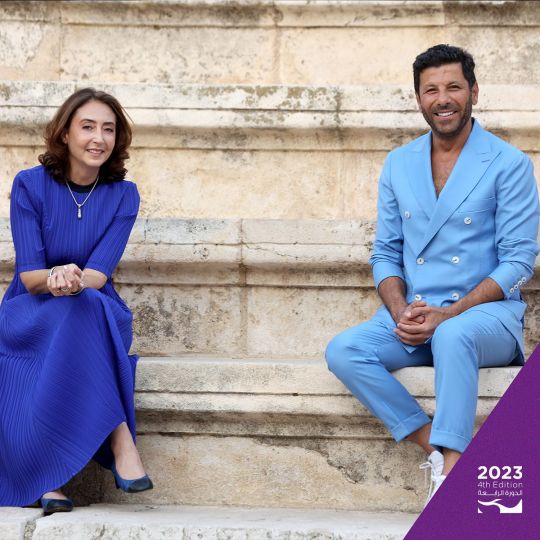
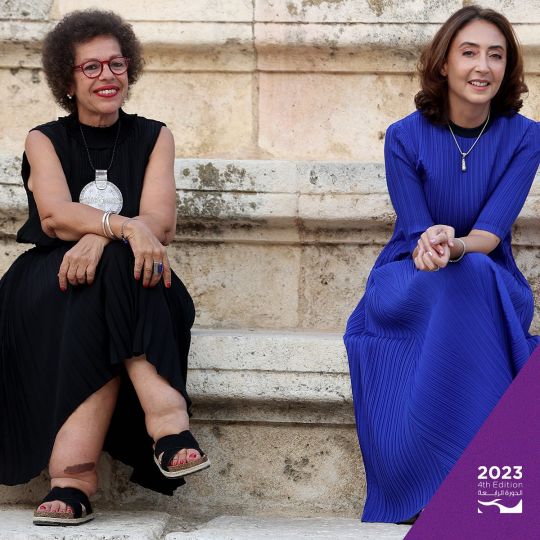

Princess Rym Al Ali, president of the Amman International Film Festival, discusses "Stories & Beginnings" from Amman's Roman Amphitheater with some of the esteemed guests on 17 August 2023
5 notes
·
View notes
Text
The boys as international trips
I don’t own the gifs.
↳Shownu - Mosi-oa-Tunya
Taking helicopter rides over the falls. White water rafting the gorge. Trying exotic foods. Drinking Amarula after dinner as you watch fireflies. Watching the sunset from the balcony of your camp. Taking a river cruise down the Zambezi. Snapping photos of wild animals. Meeting elephants. Hanging out with Sylvester the Cheetah Ambassador. Falling asleep to the sounds of Africa.
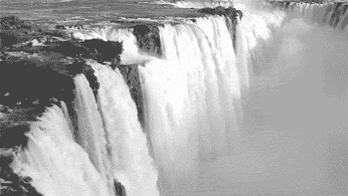
↳Wonho - The Bay
Taking in the swell during peak periods. Walking along the Lighthouse Trail, trying to see whales and dolphins from the cliffs. Picnicking at Wategos. Climb Cape Bryon Lighthouse. Escaping to the Crystal Castle and Shambhala Gardens in Montecollum. Relaxing on the beach. Exploring nature on a wildlife safari. Cuddling like koalas to the sounds of crashing waves.

↳Minhyuk - Tocius Bohemiae Domina
Strolling along the Charles Bridge. Watching the Astronomical Clock with a hot coffee in hand. Taking tours of the Prague Castle. People watching in the Old Town Square. Walking along the Malá Strana. Trying different kinds of beers and trdelníks. Shopping in the craft markets. Spending your nights hopping from club to club. Walking along the Vltava under the stars.

↳Kihyun - Entertainment Capital of the World
Walking along Las Vegas Boulevard at Night. Exploring the downtown Arts District. Trying different kinds of craft beers. Sampling different foods from around the world. Eating brunch under the faux Eiffel Tower. Hiking Red Rock. Touring the Mob and Neon Museums. Riding the Linq at night. Catching a show on the Strip. Taking in the view from your hotel room.
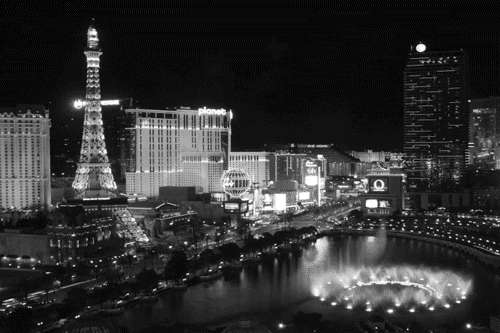
↳Hyungwon - La Ville des Lumières
Walking hand and hand in Montmartre. Exploring the Musées l'Orangerie, d’Orsay, and Louvre. Picnicking in the Jardin des Tuileries. Taking a trip to Versailles. Shopping along the Champs. Catching a show at the Palais Garnier and Moulin Rouge. Wine and cheese tasting into dinner. Trying different kinds of macarons. Kissing under the Eiffel Tower as it lights up the night.

↳Jooheon - Tenka no Daidokoro
Eating until you can’t eat anymore. Trying different variations of okonomiyaki and hakozushi. Bravely trying and failing to eat fugu. Strolling along the Umeda neighborhood. Touring the Edo farmhouses in Hattori Ryokuchi Park. Climbing to the top of the Umeda Sky Building. Relaxing at the Spa World. Shopping at the Shinsaibashi district. Walking hand and hand under the neon.

↳I.M - Madinat Aldarajat
Going back in time at The Citadel and Roman Amphitheater. Exploring the King Abdullah Mosque. Doing a day trip to Petra. Shopping in downtown Amman. Taking in the view from the Qasr al-Kharrana. People watching on Rainbow Street. Attending the Baladk Street Art Festival. Trying different kinds of baklawa. Eating at Kan Zaman. Reveling in the mix of old and new.
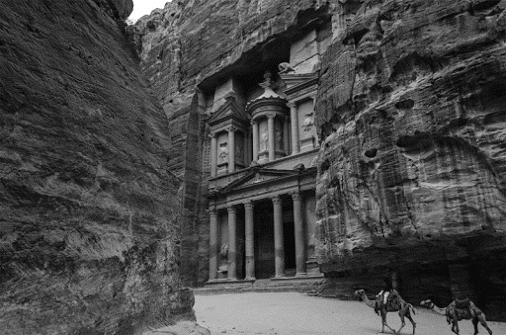
#monsta x#monsta x headcanons#monsta x drabble#monsta x imagines#shownu#wonho#minhyuk#kihyun#hyungwon#jooheon#i.m#travel
23 notes
·
View notes
Text
CLS and the First Week in Amman
CLS and the First Week in Amman

At the Roman amphitheater in Amman
The past three years I have applied to the Critical Language Scholarship Program which is a fully funded U.S. Department of State program that is an intensive overseas language and cultural immersion program for American university students. This is a highly competitive scholarship and I am very grateful and happy to be a recipient of this year.
I attended a two…
View On WordPress
2 notes
·
View notes
Text
Jordan Day One
Marhaba from Amman, Jordan! Today is my first day. I met up with guy AJ after he had completed a month and a half of field work in the Jordanian desert. AJ was working at a really cool Paleolithic site called Haranah 4, which he’ll tell you more about another time. It was convenient that he already knew his way around because he was able to pick me up at the airport at 12:30 am, after a quick 25 hour journey over here. (I flew Emirates for the 16 hour leg and it was fancy y’all!) Our driver was someone AJ has worked with through out the trip and he let us know that he is very lucky that his wife is a good cook, except he is unlucky because she does not cook him desserts. We didn’t let him know we’re doubly unlucky because neither AJ nor I cook well. Maybe we’ll pick up some tips in Jordan.



Ancient Amman was a city of seven hills, each hill with its own distinct neighborhood. Those hills now make up the center of the city of 4 million people. The Citadel is on top of one of the hills and from it you can get great panoramic views of Amman. Even though it has grown, it is still a city all in white, with many of its building hewn out of a beautiful limestone.

The Citadel was the center of Amman during its Greco-Roman period. It is a good example of the Roman colonizing “package” (the system they would install wherever the conquered) and included a market place and impressive temple of Hercules, and a nearby amphitheater.
They have a neat little museum on site but my favorite part was from when after the Romans were ousted- the Umayyad mosque and palace complex. It had a copper roof that had gone teal with age, intricate stone work and would be a sick crib for important peeps back in the day. From the Citadel here you can could also see the truly gigantic Jordan flag (416 feet tall!!!) But to be fair you can see that flag from much of the city. If you’re visiting but don’t have much time I recommend visiting this site to see a good cross section of the history. We had it almost to all to ourselves which we were confused about until we realized that it was 2pm in the middle of the summer and most people were inside avoiding the heat. (Just so my mom doesn’t worry the heat only got to 91 degrees today- so it wasn’t too bad).
After a quick taxi mixup where we got dropped off a 30 minute walk away from our next destination, we made it to the Jordan Museum! As a side note, the Ubers have been really convenient and nice in Jordan so if you have cell service they are definitely preferable to taxis. Oddly enough almost no one was here either so we had the museum to ourselves! The bottom floor had tons of well done exhibits, starting with the Paleolithic and Neolithic (including these eerie Ain Ghazal statues, (think one body two heads, surprised faces) which are some of the earliest known large scale human figurines in the world) and ending with the Dead Sea Scrolls (which were found in the 1940s are some of the oldest copies of biblical text).
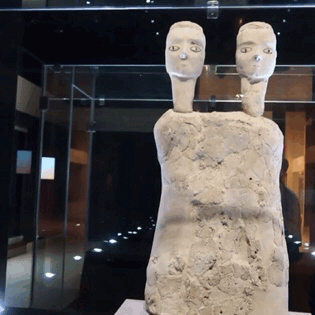
The top of floor is an interactive museum about the many inventions that came from the Middle East. It is meant for kids which means that AJ and I had a blast. He tried to fly & perform surgery, while I tried to join the house of knowledge through an virtual quiz game. And now, in the spirit of that floor of the museum here is a random list of a couple of things invented in the Middle East: Surgery, toothbrush, algebra (boo), coffee (yay!), university, clocks, flying machines, cameras, musical notation & maps.

From there we had a walk straight up 1,000 steps to eat at Sufra on Rainbow street. Rainbow street has a lot of shops and cafes, as well as little corners where people will just come to hang out. Sufra felt like an oasis, with palm trees, a fountain, and bougainvillea surrounding the courtyard. Dinner was many mini vegetarian dishes served with pita bread fresh from the oven. We were home before nightfall and it was a great first day. Tomorrow we’re off on the Kings Road!

With love,
AJ & AJ
1 note
·
View note